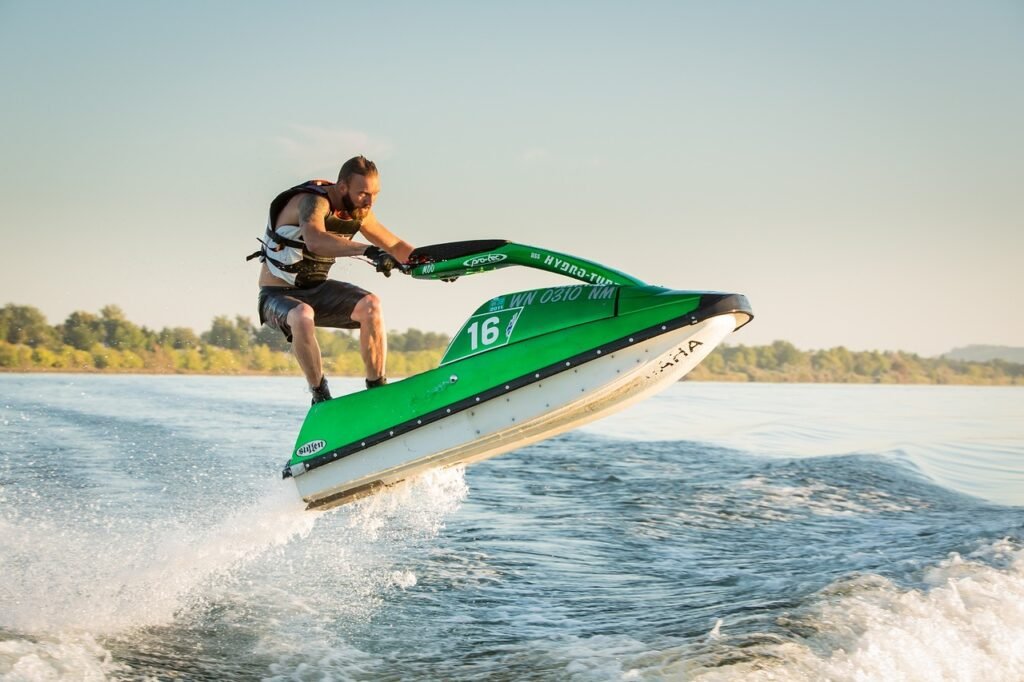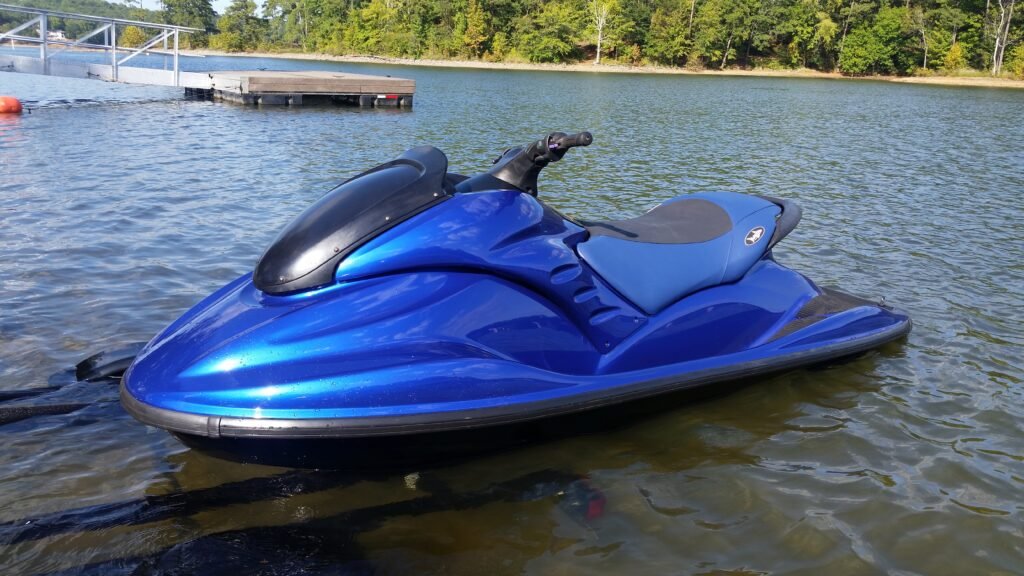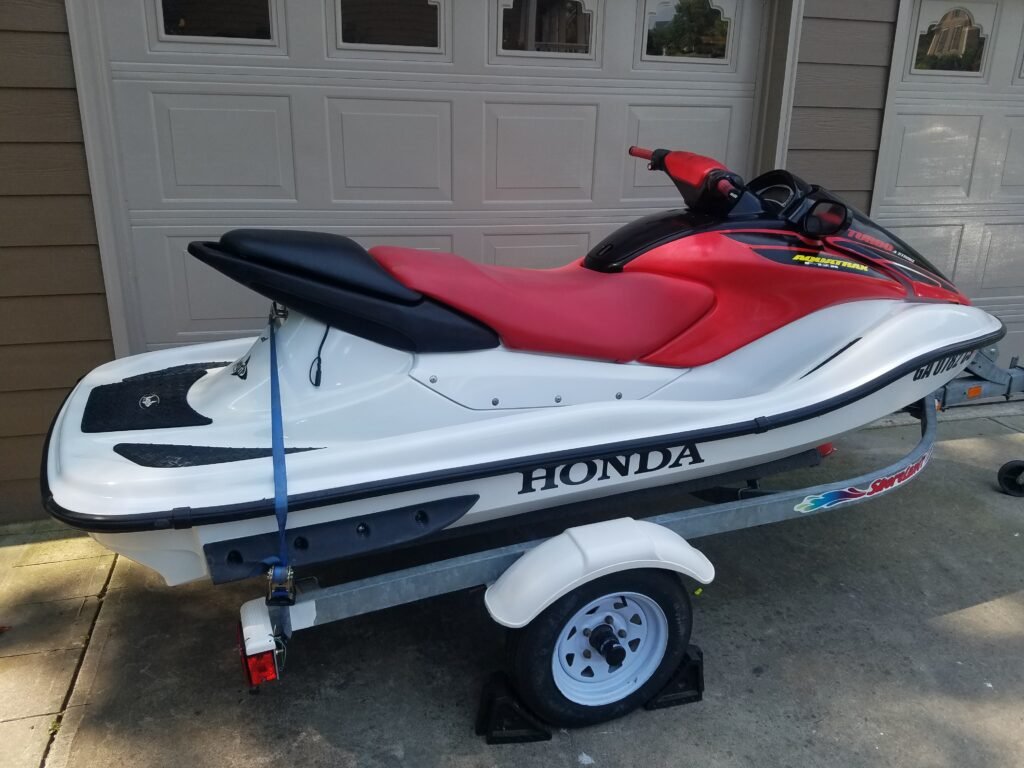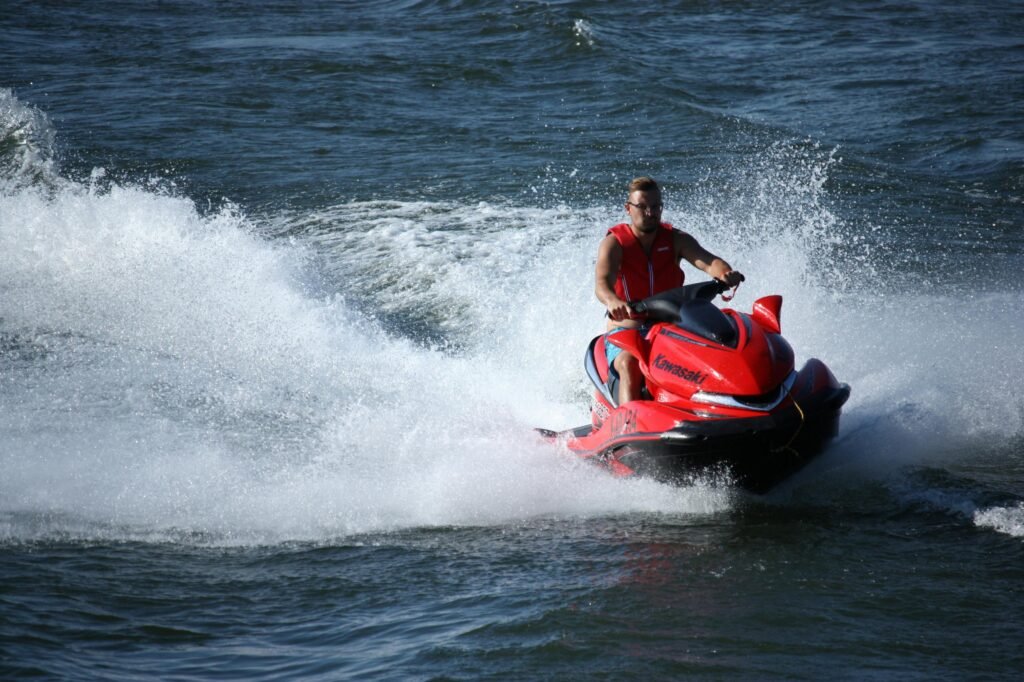This post may contain affiliate links, which means that I may make a small commission off items you purchase at no additional cost to you. Please see my terms of use page for details.
Are you curious about what a jetski is and eager to learn more? Look no further! In this article, we will provide you with a comprehensive overview of everything you need to know about jetskis, personal watercraft, and PWCs. From the most frequently asked questions about popular manufacturers like Yamaha, Sea-Doo, Kawasaki, Honda, and Polaris to customer opinions and comparisons, we’ve got you covered. Whether you’re interested in technical details, industry trends, or why certain manufacturers discontinued their production, this article will satisfy your curiosity and leave you well-informed about the world of jet skis. So, let’s dive right in and explore the fascinating realm of these thrilling watercrafts.
What is a Jetski?
A jet ski, also known as a personal watercraft (PWC), is a small watercraft that is designed to be ridden by one or two people. It is powered by a motor that creates a jet of water, propelling the watercraft through the water. Jet skis are often used for recreational purposes, such as cruising, racing, and performing tricks on the water. They are popular in beach resorts, lakes, and other recreational water areas.
How does a Jetski work?
A jet ski operates on a principle called jet propulsion. It consists of an engine, a water jet pump, and a steering system. The engine powers the water jet pump, which draws water from the surrounding environment and propels it out through a nozzle at high speed. The force of the water being expelled through the nozzle creates the propulsion that moves the jetski forward. The steering system allows the rider to control the direction of the jet ski.
What are the different types and models of Jetskis?
There are several different types and models of jet skis available on the market, each with its own features and specifications. The most common types include recreational jetskis, stand-up jet skis, and performance jet skis.
Recreational jetskis are designed for leisurely riding and are suitable for beginners and casual riders. They typically offer a comfortable and stable ride, with features such as seating for multiple riders and storage compartments.
Stand-up jetskis are smaller and lighter than recreational jetskis, and they require the rider to stand while riding. These jetskis are popular among thrill-seekers and experienced riders who enjoy performing tricks and maneuvers on the water.

Performance jet skis are built for speed and agility. They often feature more powerful engines, advanced hull designs, and specialized features for racing and high-performance riding.
Each manufacturer, including Yamaha, Sea-Doo (BRP), Kawasaki, Honda, and Polaris, offers a range of models within these different types, catering to various skill levels and preferences.

What are the main features and components of a Jetski?
Jet skis come equipped with a variety of features and components that enhance their performance and functionality. Some of the main features include:
- Hull Design: The hull is the body of the jetski and is designed to provide stability, buoyancy, and maneuverability in the water. It can vary in shape and material composition, depending on the model and intended use.
- Engine: The engine powers the jetski and generates the necessary thrust to propel it through the water. Different models may have different engine sizes and configurations, influencing factors such as speed, acceleration, and fuel efficiency.
- Control Interface: Jetskis are equipped with a handlebar or steering system that allows the rider to control the direction and speed of the watercraft. This interface typically includes throttle controls, steering controls, and various instrument displays.
- Seating and Storage: Many jetskis offer seating for one or multiple riders, with padded seats for comfort. Some models also have storage compartments to store personal belongings or equipment.
- Safety Features: Jet skis are equipped with several safety features, such as handles and straps for the rider to hold onto, emergency shut-off switches, mirrors, and safety lanyards, which attach the rider to the jetski and shut off the engine if the rider falls off.
Please note that each manufacturer may have their own unique features and components that set their jet skis apart from others in the market.
How do the different jetski manufacturers compare?
When it comes to comparing different jetski manufacturers, such as Yamaha, Sea-Doo (BRP), Kawasaki, Honda, and Polaris, there are various factors that people take into consideration. Some common points of comparison include:
- Reliability: People often have opinions about the reliability of different jetski brands based on their own experiences or the experiences of others. Factors such as build quality, durability, and long-term performance can influence perceptions of reliability.
- Performance: Each manufacturer offers a range of models with varying performance capabilities. Some may prioritize speed and acceleration, while others may focus on maneuverability and stability. The performance preferences of individuals can greatly influence their brand preferences.
- Features and Innovation: Manufacturers differentiate themselves by introducing unique features and innovations in their jet skis. These can include advancements in engine technology, hull design, handling systems, and onboard electronics. Each brand may have proprietary features that appeal to certain users.
- After-Sales Support: The level of customer service, warranty coverage, and availability of authorized service centers can play a role in brand preferences. Buyers often consider the ease of obtaining spare parts and the reputation for providing support after the purchase.
It’s important to note that personal preferences, individual experiences, and availability of models in specific regions can greatly influence how people perceive and compare these manufacturers.
Why did Honda, Polaris, and Tigershark end production of jet skis?

Honda, Polaris, and Tigershark (a brand acquired by Arctic Cat, which is now part of Textron) made decisions to discontinue their production of jetskis, PWCs, and personal watercraft in their respective plants for various reasons. Some possible factors include:
- Market Demand: Manufacturers continually evaluate market trends and demand for their products. If the demand for jetskis decreases significantly or if they face challenges in competing with other brands, manufacturers may decide to focus their resources on other product lines or segments.
- Cost Factors: Producing and maintaining a line of jetskis can involve significant investment in research and development, manufacturing facilities, marketing, and distribution. If the costs outweigh the profits, companies may choose to allocate their resources elsewhere.
- Strategic Focus: Companies often review their overall business strategies and goals. If they find that jetskis or PWCs no longer align with their long-term plans or if they deem other product categories to hold greater potential, they may opt to discontinue production in order to concentrate on more profitable ventures.
It’s worth noting that the decisions made by these manufacturers are specific to their individual circumstances, business strategies, and market conditions at the time. Industry trends, changing consumer preferences, and economic factors can all play a role in shaping these decisions.
In summary, a jetski is a small watercraft powered by a motor that creates a jet of water, propelling it through the water. There are different types and models of jetskis available, each with unique features and components. When comparing manufacturers, factors such as reliability, performance, features, and after-sales support are often considered. The decisions of Honda, Polaris, and Tigershark to end jet ski production can be influenced by market demand, cost factors, and strategic focus.
Related Articles:
How Fast Can A Jet Ski Go? Do You Prefer The Calm Rec. Ski Or The Intense Performance Ski?

